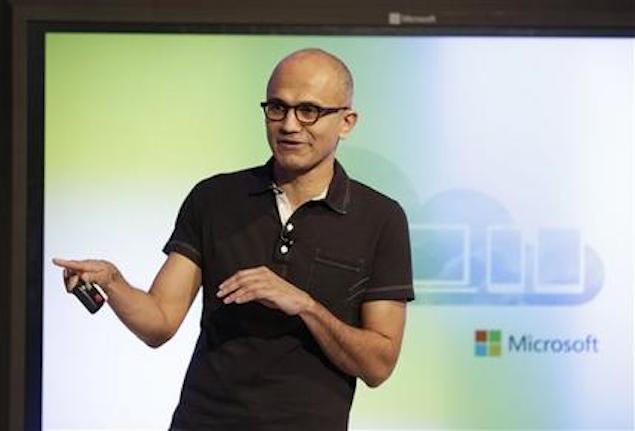In a few short weeks, the company has a fresh attitude, a more respectful attitude toward all of its constituents, it’s consumers, developers and, most especially, its competitors.
The sunny outlook is infections. Microsoft’s stock is trading at a 14-year high, hovering around $40 share.
A quick tour of what’s been going on at Microsoft shows the company making changes at a feverish pace.
Within the past few days …
He proved that Microsoft’s war with Apple is over. Microsoft has been using Apple’s iPad and iPhones with Microsoft software and cloud services in public demos all over the place: at it’s developer’s conference, at its big customer conference. We expect Apple’s products to appear on stage at its big partner conference in July, too.
Under Nadella, Microsoft ended “one of the most egregious price gouging experiences in personal technology,” as blogger Paul Thurrott at Supersite for Windows, called it. Microsoft said it would end the tactic of making Xbox users pay for an upgraded Live Gold subscription just to use the entertainment features included in the console.
He, himself, talked to Wall Street analysts at the quarterly conference call. That’s something that Ballmer didn’t do. He struck the right tone between confidence and humility, telling the Street that Microsoft’s new attitude is “courage in the face of reality.”
He launched Microsoft into the hottest new market, called the Internet of Things (IoT), which will become a $1.6 trillion business within four years, Microsoft says, and a $19 billion market in a decade, Cisco says. Microsoft launched a new database, a new cloud service and a new big data analysis service for IoT apps.
He also discussed his vision for IoT and Microsoft’s place in it, something he calls a ‘data culture’ where all people have instant access to the vast amounts of knowledge.
He also announced that Microsoft will be making a version of Windows for wearables.
Within the past few weeks …
He convinced developers to create more apps for Windows 8 and Windows Phone by offering them what is known as the “Holy Grail” in app development, tools that let an app developer write the app once and easily convert it to all Windows versions (Windows 8, Windows Phone and Xbox) and also to iOS and Android.
After seeing the new tools, one developer told us, “This was a very strategic move. Microsoft is offering a lot of support, making it easy to work with them.”
Under him, Microsoft killed the tile-based look of Windows 8 for PCs with keyboards and no touch screens, undoing Microsoft’s earlier decision to force people to use the start screen with Windows 8.
He made Windows free for all devices with nine-inch or smaller screens, a major business model change for Windows.
He’s allowed Nokia to continue to sell its new Android devices. This choice by Nokia while the acquisition was pending was considered a major embarrassment to Microsoft. But in Nadella’s Microsoft, it’s just a shrug.
Microsoft no longer views anything “not Windows” as an enemy of Microsoft. Nadella looks at it as just another device that can run Microsoft software and cloud services.
Within the past few months …
He launched Office for iPad, even though a touch version of Office still isn’t available for Windows 8. Releasing Office for iPad before Windows 8 was actually Ballmer’s decision, but Nadella used the launch as his first public appearance.
He made his master plan clear: Microsoft software will power all sorts of devices through services and apps.
He let two top managers go because they reportedly weren’t “all in” with him as CEO. He promoted Chris Caposella, previous top marketing guy for Microsoft Office, to become the top marketing guy in the company. The next day, we learned that Microsoft ended its “Scroogled” ad campaign bashing Google.
Next up, Nadella still has big problems to fix …
*He’s got to make people love Windows 8.
*He’s got to make people love Windows Phone 8.
*He’s got to keep Google from eating Microsoft’s lunch with Google Apps and Chromebooks.
*He’s got to deal with the integration of Nokia.
*Failing that, he’s got to come up with a new operating system and mobile devices that people do want.
He’s got to transition enterprise customers from old-school packaged software to the cloud, without gutting his cash-cow enterprise businesses of Microsoft Office, Windows Server, the SQL Server database, Microsoft Exchange and so on.
He’s also got to revamp the enterprise sales team to align with Microsoft’s new attitude and new goals.









